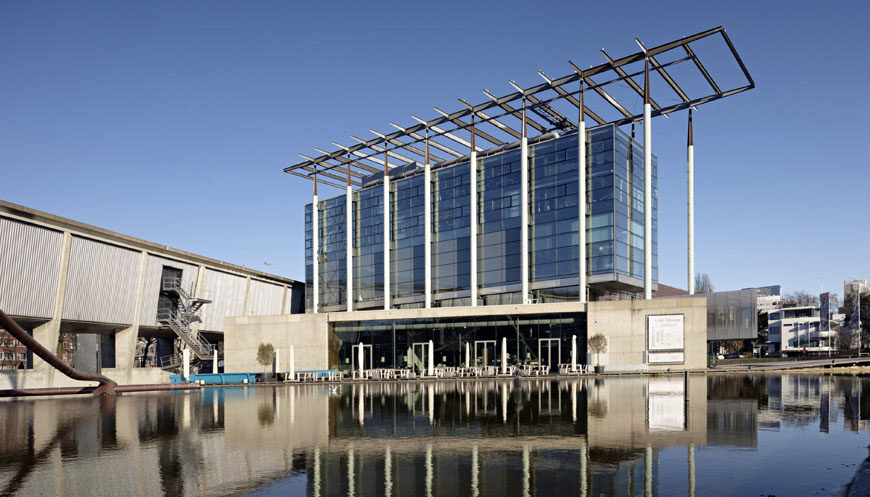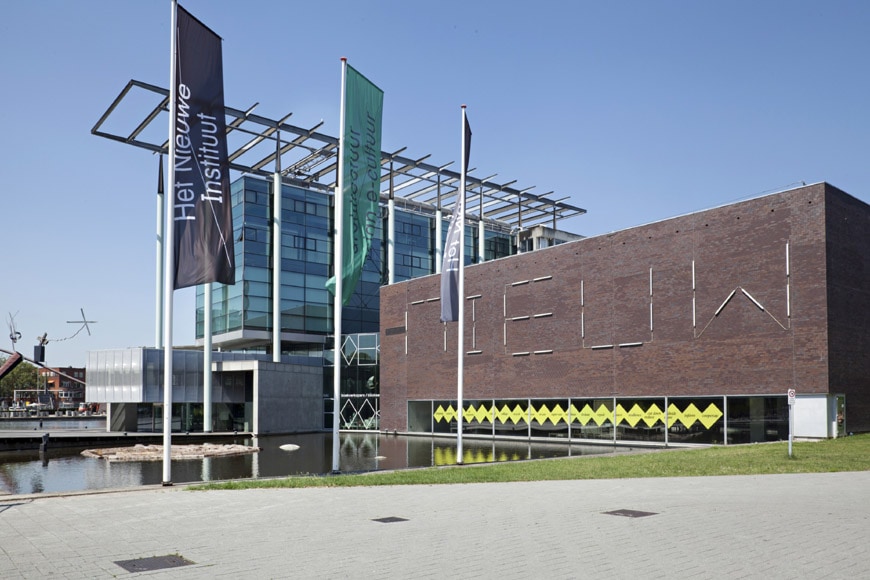Het Nieuwe Instituut, Rotterdam – Center for Architecture and Design
Zuid-Holland, The Netherlands
Phone: +31 (0)10-4401200
Website: https://hetnieuweinstituut.nl/en

Het Nieuwe Instituut (The New Institute) in Rotterdam is a cultural institution and a museum dedicated to architecture, urban planning, design, and digital culture.
The institute was founded in the 1980s by three cultural organizations: the Netherlands Architecture Documentation Centre (NDB), the Architecture Museum Foundation (SAM), and the Stichting Wonen Foundation.
Het Nieuwe Instituut’s mission is to promote research and debate on various themes related to design through exhibitions, conferences, scholarships, research programs, and publications.
The institute’s permanent collection includes drawings, photographs, and scale models by Dutch architects and urban planners. The library collects and provides information on architectural offices from both the Netherlands and abroad, land-use planning, urban planning, landscape design, interior, and product design. The collection is accessible for research purposes in Het Nieuwe Instituut’s Study Center.
Het Nieuwe Instituut, exterior view, photo Johannes Schwartz
Buildings
Het Nieuwe Instituut is located in Rotterdam’s Museumpark, with other museums such as the Museum Boijmans Van Beuningen and the Kunsthal.
In 1988, an invited architectural competition was organized to find the architect for the new museum building: the commission eventually went to the Dutch architect Jo Coenen.
Initially, the decision aroused some criticism from specialized media, many of which would have preferred the museum to be designed by the then-emerging Rotterdam-born architect Rem Koolhaas.
Yet, the design by Coenen has been widely appreciated subsequently for its skillful adoption of different materials, mainly bricks, glass, corrugated aluminum, and steel, and the complex references to modern Dutch architects, such as Gerrit Rietveld, to the traditional port architecture of Rotterdam, and the design by Drianus Van der Steur for the Museum Boijmans van Beuningen; but also showing subtle references to more radical movements such as Archigram and The Metabolists.
Other remarkable elements of Coenen’s design include a skillful relationship between architecture and site, evident in the dialogue between the buildings and the large water basin bordering them on the south side, and in the geometric and visual relationship between architecture, park, and urban landscape.
Het Nieuwe Instituut, exterior view, photo Johannes Schwartz
The complex is composed of four distinct constructions, each with different functions and made of different materials: a long curved building, housing the archives and the collections, a brick building that accommodates the exhibition spaces and the museum, an imposing glass box, housing the Study Center and various administrative offices, and a smaller structure accommodating various public functions including an auditorium, a cafe, and a bookshop.
Scale model of the institute’s building complex
Museum
Along with the research and the study centers, The Nieuwe Instituut includes the Museum of Architecture, Design, and Digital Culture (Dutch: Museum voor Architectuur, Design en Digitale cultuur).
The museum is a venue dedicated to temporary exhibitions, lectures, and educational programs focused on various fields of design from architecture to industrial design, from fashion to digital design.
Public facilities
The Study Center is open to all and provides access to the archive and library of the institution. Het Nieuwe Instituut includes an auditorium, rooms for meetings, presentations, and conferences, a cafeteria, and a bookstore specializing in architecture, urban planning, and landscape design.
The New Institute, interior view, photo Anna de Jong
The New Institute, interior view with the bookstore in the background, photo Anna de Jong
Cover image: the large glass box is the core of the complex, it accommodates the Study Center and administration offices, photo Johannes Schwartz
All photos courtesy of Het Nieuwe Instituut – Rotterdam
How our readers rate this museum (you can vote)
copyright Inexhibit 2025 - ISSN: 2283-5474







 (1 votes, average: 4.00 out of 5)
(1 votes, average: 4.00 out of 5)